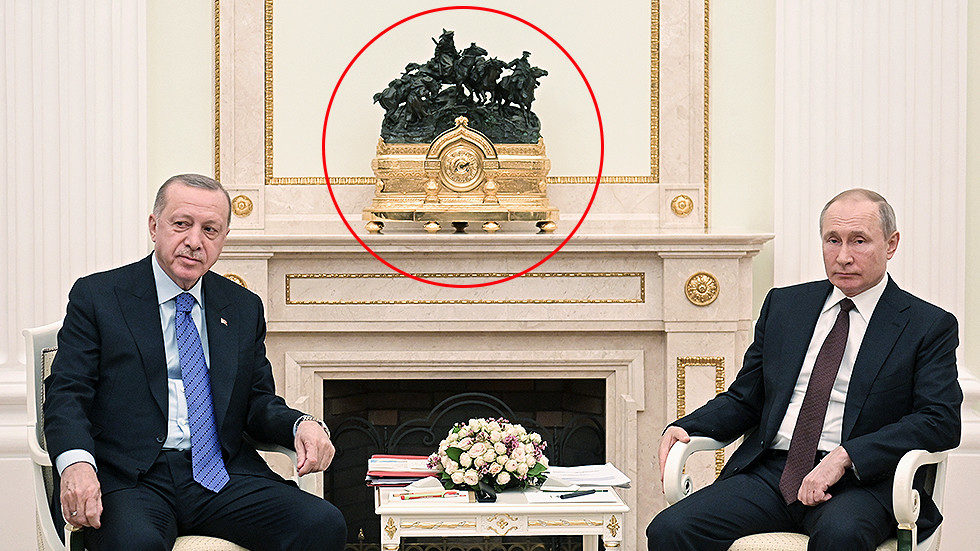
Recep Tayyip Erdogan visited Moscow on Thursday to discuss with the Russian President ways to deescalate tensions in Syria's Idlib province. When Putin and his guest were briefing the media, a clock was visible on the mantelpiece behind their backs. The instrument is decorated with a bronze group sculpture called 'Crossing the Balkans'.
Made by artist Eugene Lanceray in 1880, the work shows Russian troops crossing over the Balkan Mountains during the Russian-Turkish war a few years prior. The war, incidentally, ended in a humiliating defeat for the Ottomans, who lost control over large swathes of their Balkan territories.
While some people instantly jumped to the conclusion that the clock must have been placed there deliberately as a reminder to Erdogan, Dmitry Peskov said this was not the case. "Of course it was a coincidence," he assured reporters, adding that the piece of art has been in the room for about two decades.
The trolling theory may be appealing to Russian nationalists, but should be taken with a grain of salt even by those who wouldn't take Peskov's word on it. Lanceray, who despite his French name was a Russian artist, is not as internationally famous as Michelangelo or Rodin, so it's unlikely Erdogan instantly recognized this particular work and was able to decipher the alleged signal.
If anything, the Turkish leader could have had an issue with another statue he could see in the Kremlin. In the corner of the room is a big monument to Catherine the Great, the 18th century Russian Empress credited with wrestling Crimea from the Turks during the three decades of her rule. It can be seen in some of the photos of the state visit.
Anyway, if the Turkish leader had any strong feelings about the interior of the Kremlin, he probably wouldn't share it with the public, so we may only guess whether he considers himself to have been trolled.



Comment: Inadvertant or not, you have to admire the symbolism. Erdogan had best take care in the next few months.